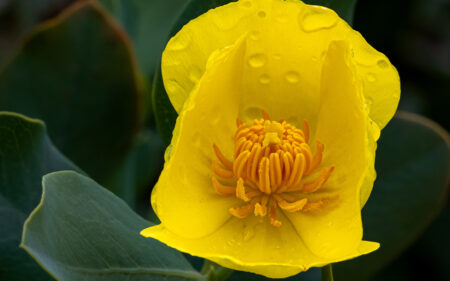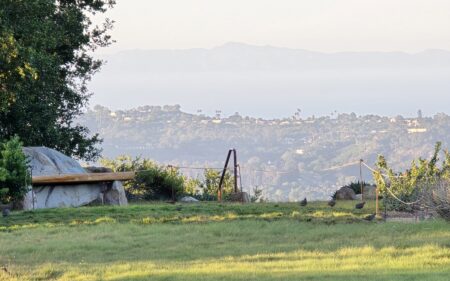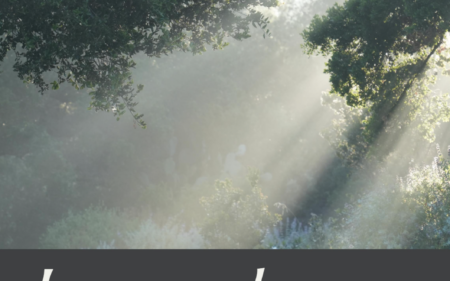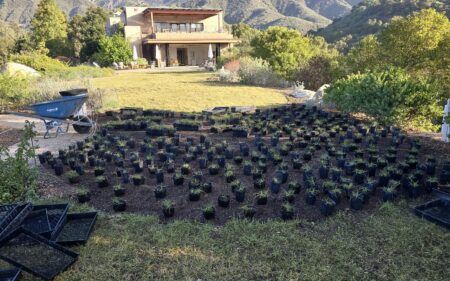Seven Questions with Tucker Lichenologist and Curator of the Lichenarium Rikke Reese Næsborg, Ph.D.
In the pursuit of her doctorate in Sweden, Rikke Reese Næsborg, Ph.D., became fascinated with lichen and was determined to turn her passion into a career studying this complex lifeform and it’s vital role in a thriving ecosystem. However, upon relocating to the United States, she encountered a disheartening reality — lichenology is a severely underfunded and neglected field of research.
Had it not been for the generous support of Dr. Shirley Tucker, a researcher, botanist, and professor at Louisiana State University, her dream would not have been possible.
Dr. Tucker was well-acquainted with the challenges in securing funding for vital research after her own experiences in the late 1950s. After retiring and moving to Santa Barbara in 1995 with her husband (Entomologist Dr. Ken Tucker), Dr. Tucker embarked on a new chapter as a research associate at the Garden and concentrated her efforts on exploring the diversity of lichens in California. Wanting to continue the advancement of botanical research and understanding, in 2013 she endowed two new positions at the Garden.
In 2019, Rikke was offered a position as the Garden’s first Tucker Lichenologist and Curator of the Lichenarium. Having the opportunity to meet others equally devoted to the conservation and study of lichen is uncommon. So, when Rikke met Dr. Tucker, an immediate bond formed over their shared passion and they haven’t stopped talking about lichen since!
Today, the Garden’s Lichenarium holds more than 50,000 specimens, making it one of the largest collections in California. And as one of only two lichenologists in California, Rikke continues to work in collaboration with Dr. Tucker every chance she gets.
Currently, Rikke is back in her hometown of Denmark, spending some well-deserved time with her family. However, never wanting to miss an opportunity to share her passion, she’s joining us from halfway across the world in this episode of “Seven Questions: Abroad Edition” so we can learn more about her role as a lichenologist.
Rikke, many of us are new to the world of lichen, what do you do as a lichenologist and curator of the Lichenarium?
[Rikke] I’m actually one of only two professional lichenologists in all of California. As a lichenologist, I work with many different aspects of lichens. I’m really interested in why different lichens have distributed differently across the landscape. But, I’m also very passionate about the conservation of lichens. I work on getting more rare species on the rare species list to try to offer them a little bit of protection, just a tiny bit! In addition to that, I’m also the caretaker of more than 50,000 specimens of lichens that we have in the Lichenarium, so there’s a lot to do!
How did you get into this work? Can you tell me a little bit more about your journey and what sparked your passion?
[Rikke] This passion actually comes from many years ago when I attended a nature conservation school in Sweden. I’m originally from Denmark and all my schooling is from Denmark and Sweden. So, I went to this nature conservation school in Sweden and during that time I went with a Swedish forester who took me to pristine old growth forest with lots of rare and endangered lichens. He showed me all these amazing organisms and told me all about them. He really opened a completely new world to me and I was hooked! I went on to pursue a Ph.D. in lichenology after that! It was so interesting to me.
Why is your position titled the Tucker lichenologist?
[Rikke] My position is named after Dr. Shirley Tucker. She is a retired scientist who thinks research is really important. She has actually supported the Garden for many, many years now. She also endowed Matt Guilliams, Ph.D. position as the Tucker Plant Systematist and Curator of the Herbarium.
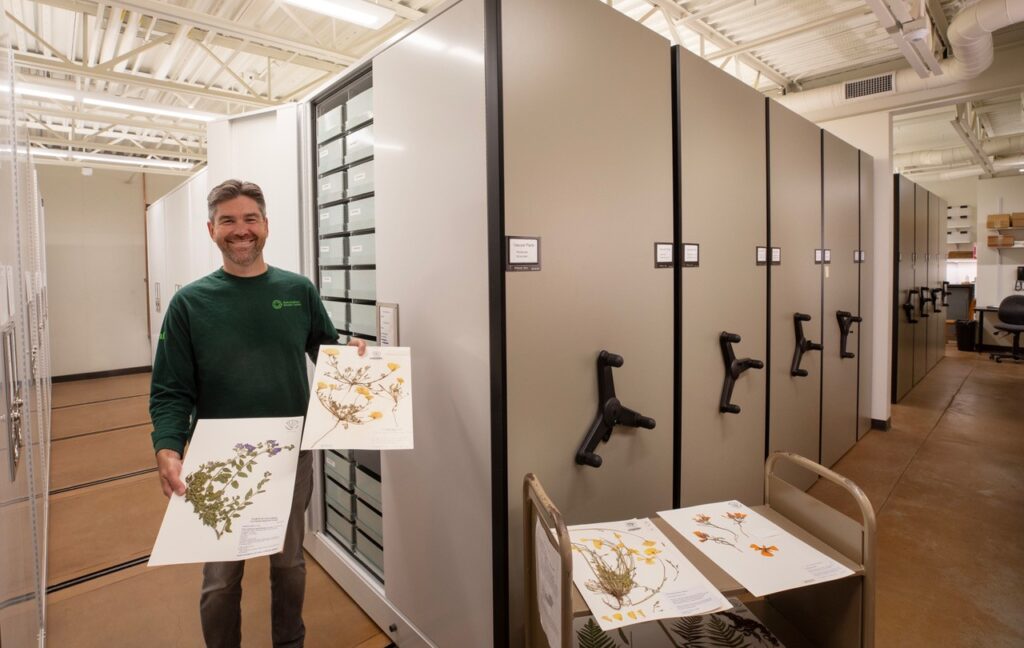
What is Shirley’s relation to the Garden?
[Rikke] Well, her husband actually grew up in Santa Barbara. Both she and her husband were professors in Louisiana, but when they retired they moved back to Santa Barbara. Shirley’s brother-in-law John Tucker actually worked for Santa Barbara Botanic Garden many, many years ago as a botanist. Shirley since then has donated more than 9,500 specimens of lichens to the Garden and she still does research with the Garden. Then, of course, there is all the financial support she has offered the Garden over the years, so she really has a close relationship with us.
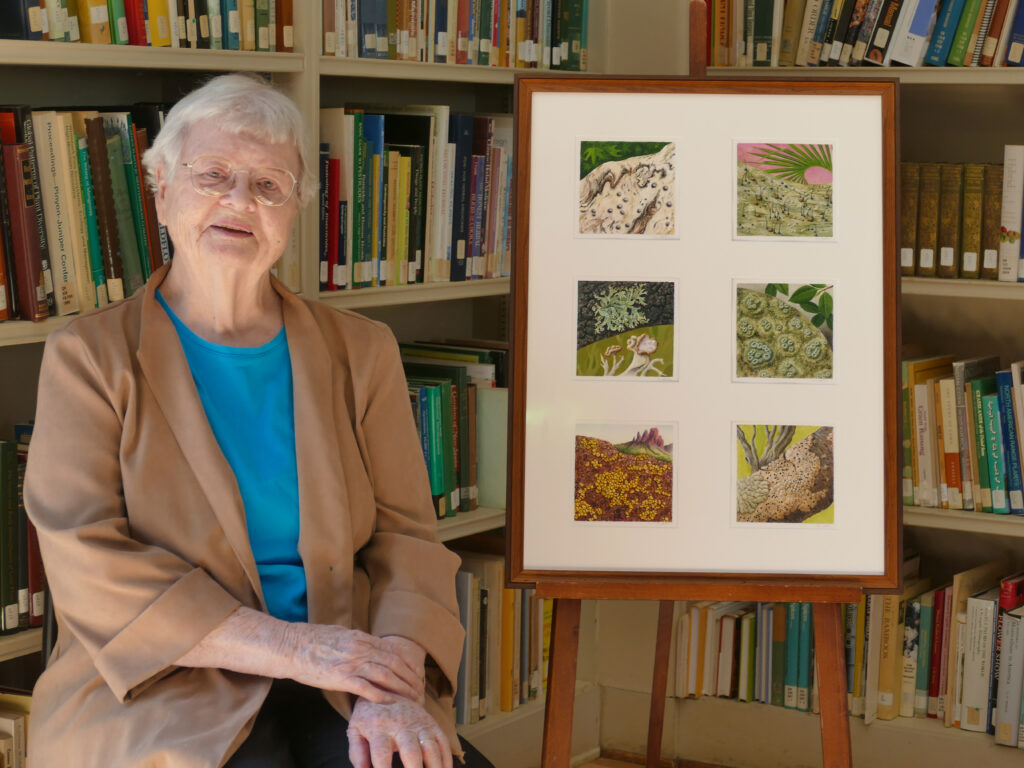
Do you have a favorite story about collecting a lichen?
[Rikke] Let me see … well, there is a very memorable moment that comes to mind. It is about a lichen with a “charming” name, Fairy Puke or Icmadophila ericetorum if you want the Latin name. I found it once growing at 230 feet above the ground. It was growing on the top of a splendid and rotting redwood trunk that had probably broken off 100 years ago and was now rotting back. The funny thing about that is Fairy Puke really prefers to grow on decomposed wood, so finding it up on the top of the tree was really special. It had only been found once before in the canopy, so that was just so amazing.

I’ve heard that Shirley also has a passion for collecting lichen. What is your relationship like with Shirley?
[Rikke] I have maintained a very close working relationship with Shirley. She is unfortunately not able to come to the Garden anymore, as she is getting older, but she is still very active so I sometimes bring her lichens from our collection. Sometimes she asks me for a second opinion about lichen identification and then of course we talk about lichens a lot! We have a close relationship still.
Alright Rikke, so last question, how do endowments like Shirley’s help the Garden?
[Rikke] As I’ve mentioned I’m one of only two professional lichenologists in all of California and Shirley’s endowment has made my position possible. Lichens are often overlooked, especially when it comes to funding and that is despite the fact that they really provide many important functions in nature. For example, they prevent soil erosion and they also contribute to the nutrient cycle, among many other things. The lichens in California especially are understudied, so Shirley’s work has really made my work possible. And this kind of basic work that we are able to do on an endowment, it’s really the foundation of all other research.
If I can end with an appeal for everyone reading and listening, please, please donate to the Garden today so we can continue our work. That would be so amazing for us all.
 Donate
Donate
